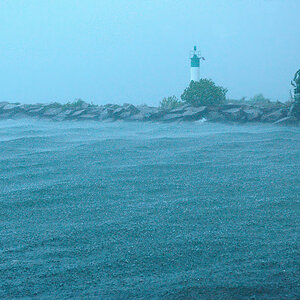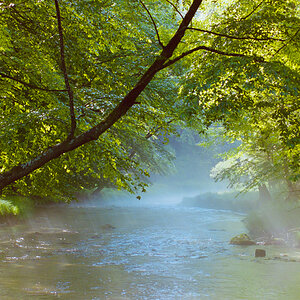itsajeepthing
TPF Noob!
- Joined
- Feb 24, 2006
- Messages
- 37
- Reaction score
- 0
- Location
- Milton, Ontario, Canada
- Can others edit my Photos
- Photos OK to edit
Good morning fellow photography junkies! 
I've been doing some reading, and I do feel that I am making some headway and starting to develop a better understanding of photography basics. I need some help wrapping my head around a few things though:
1. First, I have a landscape scene that I want to shoot with a very deep DOF, so I'm going to stop down my lens as far as it will go. Where should my focus point be? Should I a) "aim" the focus point for 1/3 into the shot, or b) manually set the focus ring to "infinity" and ignore the viewfinder, or c) manually set the focus ring to lets say 2 feet and ignore the viewfinder? Which is the correct approach for maximum DOF in the shot? Since the viewfinder is only showing you what the shot looks like wide open, is it just a matter of practice and experience to get this right?
2. I understand that there is a "sweet spot" for sharpness and clarity (in terms of arpeture size). Is this a known value that can be determined by the lens you are using, or this something you have to find on your own for each lens you use? Does changing the focal length of your lens change this value? It seems to me that you would want to keep your arpeture as close to this value as possible for sharp pictures, and then compromise as needed when DOF control is a major element of the shot you are taking. Am I on the right track here, or completely confused?
thanks for your input!
I've been doing some reading, and I do feel that I am making some headway and starting to develop a better understanding of photography basics. I need some help wrapping my head around a few things though:
1. First, I have a landscape scene that I want to shoot with a very deep DOF, so I'm going to stop down my lens as far as it will go. Where should my focus point be? Should I a) "aim" the focus point for 1/3 into the shot, or b) manually set the focus ring to "infinity" and ignore the viewfinder, or c) manually set the focus ring to lets say 2 feet and ignore the viewfinder? Which is the correct approach for maximum DOF in the shot? Since the viewfinder is only showing you what the shot looks like wide open, is it just a matter of practice and experience to get this right?
2. I understand that there is a "sweet spot" for sharpness and clarity (in terms of arpeture size). Is this a known value that can be determined by the lens you are using, or this something you have to find on your own for each lens you use? Does changing the focal length of your lens change this value? It seems to me that you would want to keep your arpeture as close to this value as possible for sharp pictures, and then compromise as needed when DOF control is a major element of the shot you are taking. Am I on the right track here, or completely confused?
thanks for your input!


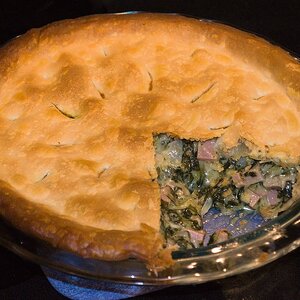

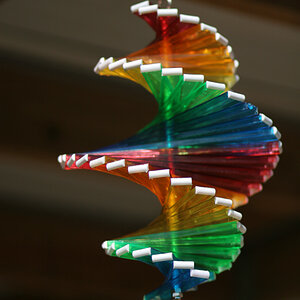
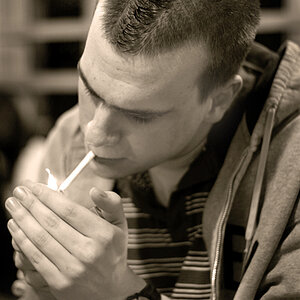
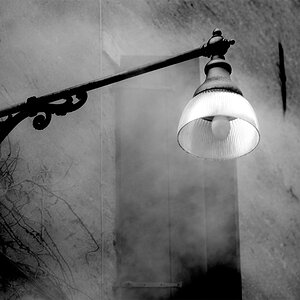
![[No title]](/data/xfmg/thumbnail/39/39429-cfa441056f1e6a1995539dc87c794876.jpg?1619739028)

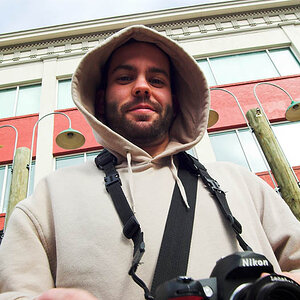
![[No title]](/data/xfmg/thumbnail/41/41780-5efe87aed04575de7c09b065d70763ae.jpg?1619739890)
